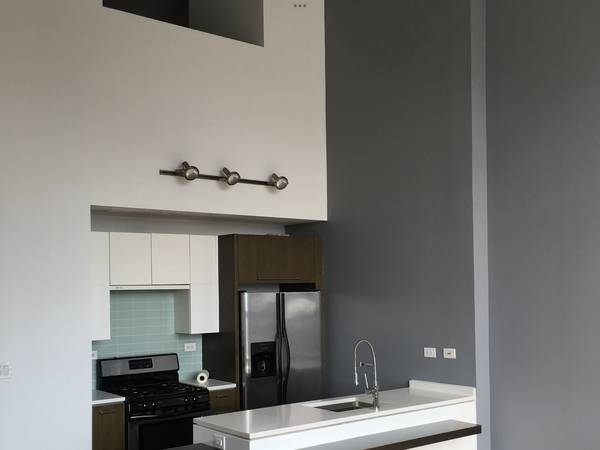Table of Contents
Defining home renovation and remodel: Understanding the distinctions
Home renovation and remodel are two terms often used interchangeably, but it is important to understand the distinctions between them. While both involve making changes to an existing home, they differ in the extent of the work and the goals they aim to achieve.
Home renovation typically focuses on improving existing features and functionality of a space. This could involve updating fixtures, replacing flooring, or repainting walls. The purpose of a renovation is to enhance the aesthetics and functionality of an existing space, without making significant structural changes. It is a way to breathe new life into a home while maintaining its overall layout and structure. On the other hand, a remodel involves creating a whole new space or layout within a home. This could include tearing down walls, adding extensions, or reconfiguring rooms. The aim of a remodel is to completely transform the existing structure to better suit the homeowner’s needs and preferences. It requires a more substantial and often more complex set of changes compared to a renovation.
Scope of work: Identifying the extent of changes in a home renovation and remodel
In home renovations, the scope of work refers to the extent of changes that will be made to the existing structure. This can range from minor updates, such as repainting walls and replacing fixtures, to more significant alterations, such as adding rooms or expanding the square footage. The scope of work in a renovation is typically focused on improving and updating the existing features and functionality of the home.
On the other hand, a remodel involves creating a whole new space or layout within the existing structure. This may involve tearing down walls, reconfiguring rooms, or even adding entirely new sections to the house. The scope of work in a remodel is much more extensive and often requires a complete overhaul of the existing space. The primary objective of a remodel is to transform the overall design and layout of the home, rather than simply updating its existing features.
Focal points of a renovation: Enhancing existing features and functionality
Renovations offer homeowners the opportunity to enhance the existing features and functionality of their homes. Whether it’s updating a kitchen, remodeling a bathroom, or giving a fresh look to the living space, the focal points of a renovation often revolve around making improvements to the existing layout and fixtures. For instance, homeowners may choose to upgrade their kitchen with modern appliances, add additional storage space, or create an open floor plan that provides better flow and functionality. By focusing on enhancing existing features, renovations aim to provide homeowners with a more comfortable and enjoyable living space that meets their evolving needs.
Functionality is a key aspect of a renovation, as homeowners seek to optimize the functionality of their homes to accommodate their lifestyle. This could involve reconfiguring the layout of a home to maximize usable space, adding built-in storage solutions, or improving the flow between rooms. Furthermore, renovations may also involve enhancing existing features, such as upgrading flooring, replacing outdated fixtures, or installing energy-efficient appliances. By giving careful consideration to the focal points of a renovation, homeowners can transform their spaces into more functional and aesthetically pleasing areas that better align with their vision and requirements.
Key aspects of a remodel: Creating a whole new space or layout
When it comes to remodeling, one of the key aspects is the ability to create a whole new space or layout. This means that homeowners have the opportunity to completely transform their existing space and tailor it to their specific needs and preferences. Whether it’s expanding a room, adding an extra level, or reconfiguring the layout, a remodel allows for endless possibilities.
One important keyword to consider during a remodel is functionality. By creating a whole new space or layout, homeowners can optimize the functionality of their home. It’s an opportunity to design a space that flows seamlessly, maximizes storage, and enhances overall usability. The goal is to create a space that not only looks aesthetically pleasing but also serves the practical needs of the occupants. A well-planned remodel can make everyday tasks more efficient and enjoyable, ultimately improving the quality of life in the home.
Structural changes: Exploring the impact on the existing framework in renovations and remodels
In both home renovations and remodels, structural changes can greatly impact the existing framework of a house. These changes involve modifications to the fundamental structure of the building, such as walls, floors, and roofs. The main goal of structural changes is to optimize the layout and functionality of a space, ensuring that the new design meets the desired requirements and aesthetic preferences. Whether it’s removing walls to create an open-concept living area or adding additional levels to accommodate a growing family, structural changes in renovations and remodels are crucial in transforming a house into a dream home.
However, it is important to note that structural changes come with their own set of considerations. These modifications can sometimes require significant resources in terms of time, money, and professional expertise. Additionally, homeowners need to be aware of any potential impact these changes may have on the existing structure’s integrity and stability. Therefore, it is crucial to work with experienced professionals, such as architects and structural engineers, who can assess the impact of proposed structural changes and ensure the safety of the overall construction. By carefully considering these factors, homeowners can confidently embark on a project that not only enhances the aesthetics but also maintains the structural integrity of their home.
Budget considerations: Examining cost differences between renovations and remodels
Renovations and remodels often come with different costs, which is an important consideration when deciding which option is best for your home. The cost of a renovation typically depends on the extent of changes needed to enhance the existing features and functionality of a space. This may involve updating fixtures, replacing outdated materials, and giving the area a fresh new look. It’s essential to assess your budget and prioritize the areas that require renovation in order to stay within your financial means.
On the other hand, a remodel involves creating an entirely new space or layout, which can have a significant impact on the overall cost. This may include tearing down walls, changing the room’s configuration, or even adding new rooms altogether. The expense of a remodel can be higher due to the extensive work involved in reimagining the space and potentially making structural changes. It’s crucial to carefully consider the financial implications of a remodel and ensure that you have a clear understanding of the projected costs before committing to this option.
Timeframe: Comparing the duration of home renovations and remodels
In the world of home renovations and remodels, one important consideration is the timeframe for completing the project. The duration of a home renovation largely depends on the scope of work involved. For minor renovations such as updating fixtures or repainting walls, the timeframe can be relatively short, often lasting just a few days to a couple of weeks. However, for more extensive renovations that require structural changes or room additions, the timeline can range from a few weeks to several months.
On the other hand, a home remodel typically involves creating a whole new space or layout. As a result, the duration of a remodel project is generally longer compared to a renovation. Remodels often involve major structural changes, such as knocking down walls, adding new rooms, or completely reconfiguring the existing space. Depending on the complexity of the remodel, the timeframe can span several months to even a year. It is crucial to consider the estimated timeframe when deciding between a renovation and a remodel to ensure that it aligns with your expectations and needs.
Permits and regulations: Navigating the legal requirements for renovations and remodels
One crucial aspect of undertaking home renovations and remodels is navigating the legal requirements and obtaining the necessary permits and approvals. These permits are essential as they ensure that the renovations or remodels comply with building codes and regulations set by local authorities. Failure to obtain the required permits can lead to fines, delays, and even the need to undo completed work.
To begin the process of securing permits, homeowners or contractors must first identify the specific regulations and requirements that apply to their project. This typically involves researching the local building codes, zoning regulations, and any other relevant rules and restrictions. Each jurisdiction may have its unique set of regulations, covering aspects such as structural changes, electrical work, plumbing, and other specific areas related to renovations and remodels. It is crucial to adhere to these regulations to ensure that the project is legally compliant and meets all necessary safety standards.
Collaboration with professionals: Understanding the role of contractors, architects, and designers in renovations and remodels
When undertaking a home renovation or remodel, it is crucial to collaborate with professionals such as contractors, architects, and designers. These experts play essential roles in ensuring the success of your project and transforming your vision into reality. Contractors are responsible for managing the construction process, coordinating tradespeople, and overseeing the quality of work. Their expertise in scheduling, budgeting, and procuring materials is invaluable in keeping your project on track. Architects, on the other hand, bring a creative and strategic approach to the design aspect of your renovation or remodel. They work closely with you to understand your needs and preferences, translating them into functional and aesthetically pleasing spaces. Designers are skilled in selecting finishes, furnishings, and fixtures that harmonize with the overall design scheme. Their expertise helps bring cohesiveness and style to your project, making it truly unique and personalized.
In the collaboration between professionals and homeowners, clear communication is essential. Homeowners should articulate their goals for the renovation or remodel and provide detailed information about their preferences and lifestyles. This helps professionals to understand your vision and tailor their expertise accordingly. In return, professionals should provide guidance, advice, and suggestions based on their experience and expertise. Their input can help you make informed decisions and avoid costly mistakes. Collaboration with professionals ensures that your home renovation or remodel is a collaborative effort, resulting in a space that reflects your lifestyle, meets your needs, and exceeds your expectations.
Choosing between a renovation and remodel: Factors to consider when deciding which option is best for your home.
When considering whether to pursue a renovation or a remodel for your home, there are several factors to take into account. One important consideration is the extent of changes you wish to make. A renovation typically involves enhancing existing features and functionality of a space. This may include updating fixtures, repainting walls, or refinishing floors. On the other hand, a remodel involves more extensive changes to the space, such as creating a whole new layout or adding additional rooms. Understanding the scope of work you desire will help guide your decision-making process.
Another crucial aspect to consider is the impact on the existing framework of your home. In a renovation, structural changes are usually minimal and mainly focused on enhancing the existing structure. This may involve removing or adding walls, updating plumbing or electrical systems, or replacing windows and doors. On the other hand, a remodel often requires significant alterations to the existing structure, potentially involving major demolitions, additions, or reconfigurations. Carefully evaluating the potential structural changes that each option entails will help you determine the feasibility and impact on your home.



